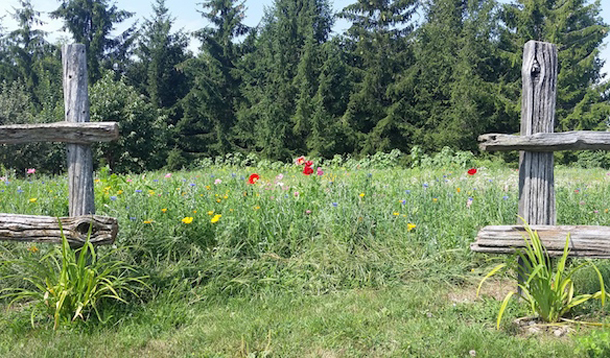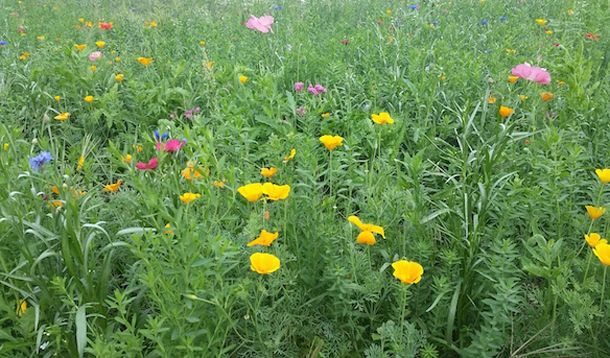There are times in our lives when we need to pay attention to certain things happening around us and take action to make certain situations better. This is one of those times. We are losing our global bee population.
As parents, we may worry about having bees in our backyards, but unfortunately, not having bees is a significantly bigger issue. Simply put, bees are essential in the process of growing food. Bees feed our families so we need to care for our local bee populations to ensure their survival. We just have to find a way to live in harmony with these amazing creatures.
There are several factors contributing to bee-population decline, one of which is the loss of their natural food sources. Bees survive by harvesting pollen and nectar from flowers.
Our homes and our yards are an opportunity to help the bees. What we can do to help is add more of the flowers that bees love to our outdoor spaces. Honey Nut Cheerios is asking Canadians to help reach a goal of planting 35 million wildflowers this year, one for each of us. You don't need a large area to do this, any space you can dedicate in your yard will help. If you have the space, you can install a meadow or if your space is limited, add some flowers to a container or a garden bed. Every little bit helps. I turned a large section of my lawn into a beautiful meadow filled with many types of flowers and grasses that bees use to create healthy colonies. Here's how I did it:

Before you can begin planting seeds, you will need to remove all of the existing lawn in an environmentally-friendly way. Spraying the entire area with a herbicide defeats the purpose of doing something healthy for nature. In my case, I covered the lawn with a series of heavy tarps to naturally smother all of the grass beneath. It takes about 4-6 weeks to ensure that the hardiest of weeds won’t come back.

After the 4-6 week timeframe has passed, till or plow the area to make sure the roots of the yellowed grass are exposed to the sun for a few days. This will help ensure that your bee-friendly area starts out with as few weeds as possible.

Do some homework and research the plants you will be putting into your yard. The best mixes have a combination of perennials, self-seeding annuals, and some biennials (which take 2-years to flower and reseed). Also check the square footage that each package will cover. Wildflowers are an essential part of the natural habitat bees require and sowing them is easy if you follow the instructions.
This is also a great time to include your kids in the process, just make sure to order lots of seed. Trust me on this, we ran out halfway through spreading! As part of the bringbackthebees.ca program, Vesey Seeds has teamed up with Honey Nut Cheerios to provide Canadians with free seeds perfect for your meadow spaces. Go online and order yours now so you will be all set for when gardening season arrives! They're FREE!

The plants you are introducing are naturally designed to spread. Make sure you have a way to prevent the seeds from ending up in your neighbour’s lawn. Consider adding a fence, or a row of dense trees like cedars or yews that will act as a barrier to prevent airborne seeds from spreading.

During the first 3-years of a meadow garden, you will have to pull out the invasive plants so they don’t take over the space. This is part of the reason why researching what plants are included in your seed mix is important (see step #3). You want to encourage lots of plants but you want to make sure to give the flowering varieties the best chance at survival by removing the competition.
Share with your friends and your social media community that you're making a choice to help the bees. Use the hashtag #BringBacktheBees to share your pictures and search the hashtag to see the amazing progress others have made.

Whether you decide to install a meadow like I did, or just add some bee-friendly wildflowers to your space, this is the perfect summer to help make a difference. Let's all do our part to #BringBacktheBees.
